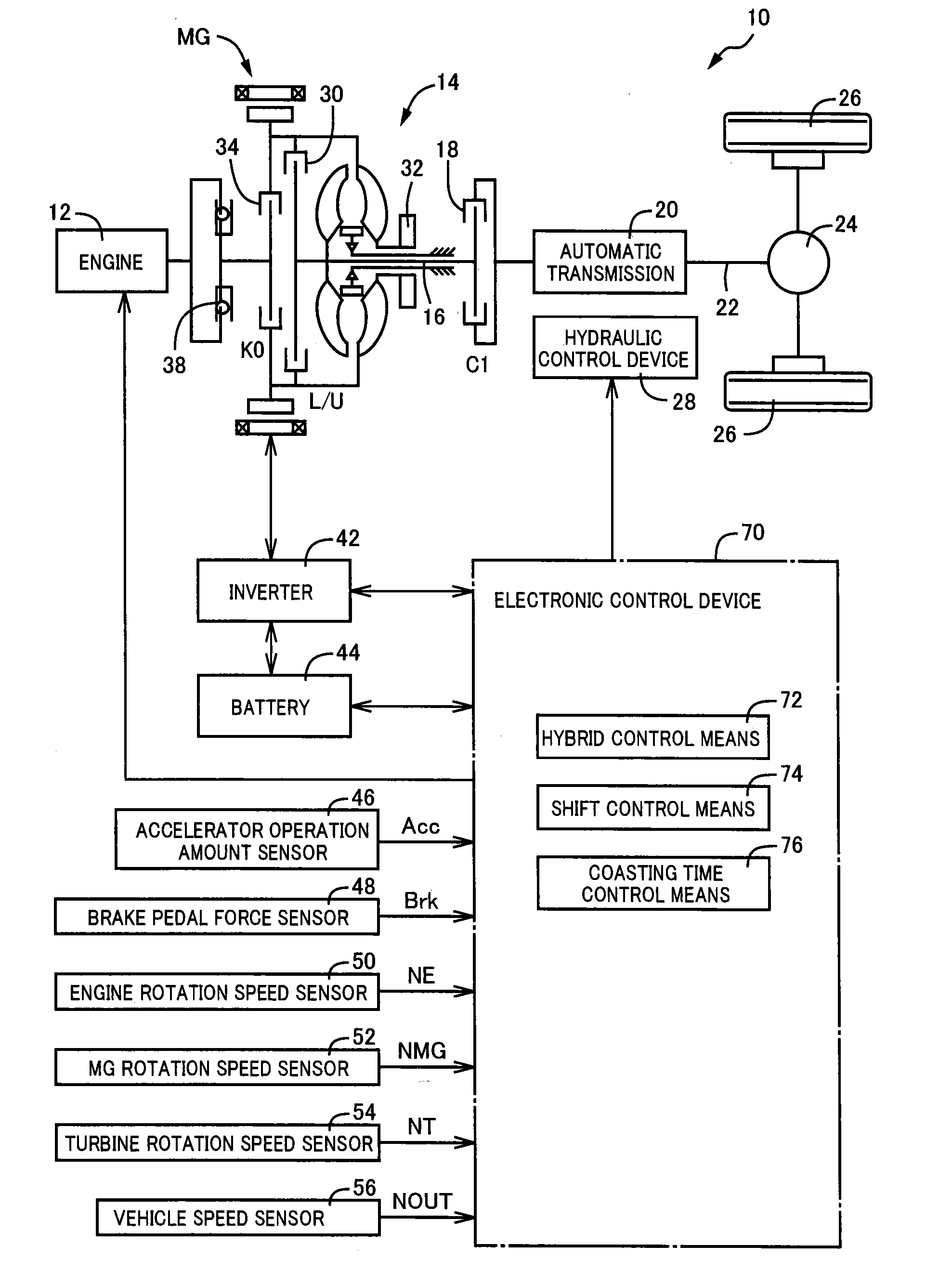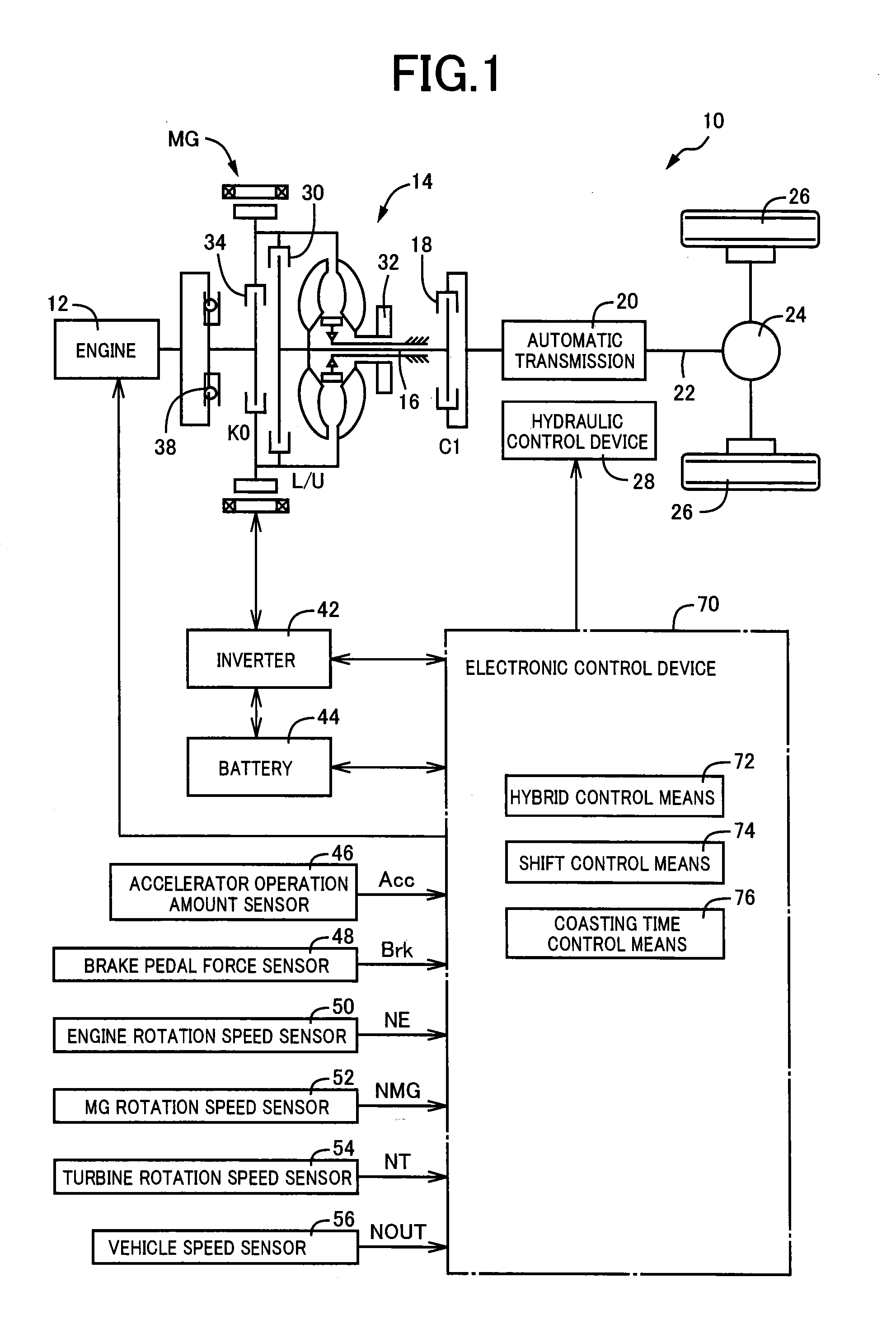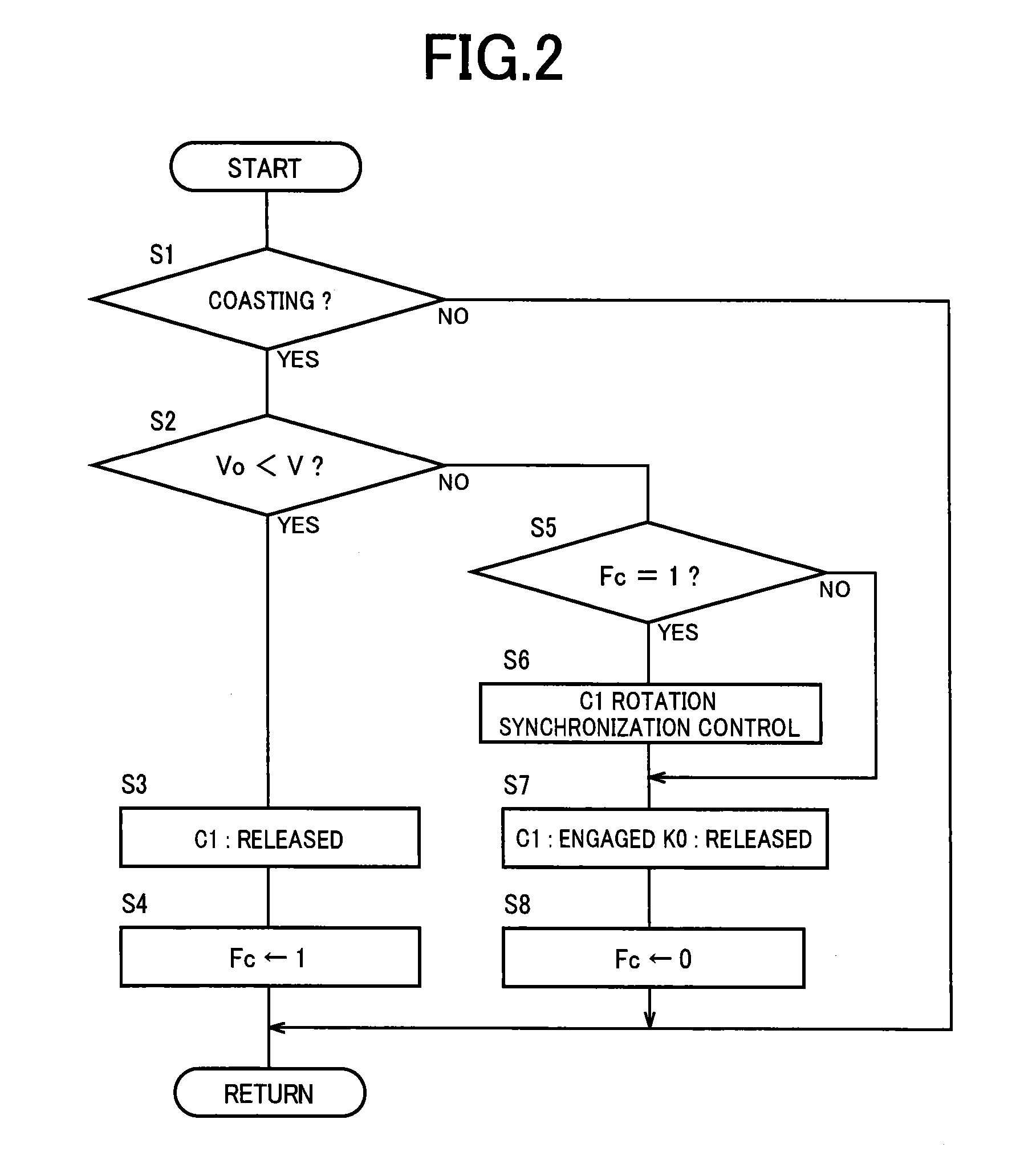Vehicle control device
a technology of vehicle control and control device, which is applied in the direction of process and machine control, road transportation, instruments, etc., can solve the problem of disconnecting/disconnecting devices, and achieve excellent drive force responsiveness, increase the torque of electric motors, and improve fuel efficiency.
- Summary
- Abstract
- Description
- Claims
- Application Information
AI Technical Summary
Benefits of technology
Problems solved by technology
Method used
Image
Examples
example
[0025]An example of the present invention will now be described in detail with reference to the drawings.
[0026]FIG. 1 is a diagram of a general configuration including a schematic of a drive system of a hybrid vehicle 10 to which the present invention is preferably applied. The hybrid vehicle 10 includes an engine 12 that is an internal combustion engine such as a gasoline engine and a diesel engine generating power from combustion of fuel and a motor generator MG acting as an electric motor and an electric generator, as drive force sources. The output of the engine 12 and the motor generator MG is transmitted from a torque converter 14 that is a fluid power transmission device via a turbine shaft 16 and a C1 clutch 18 to an automatic transmission 20 and further transmitted via an output shaft 22 and a differential gear device 24 to left and right drive wheels 26. The torque converter 14 includes a lockup clutch (L / U clutch) 30 directly coupling a pump impeller and a turbine impelle...
PUM
 Login to View More
Login to View More Abstract
Description
Claims
Application Information
 Login to View More
Login to View More - R&D
- Intellectual Property
- Life Sciences
- Materials
- Tech Scout
- Unparalleled Data Quality
- Higher Quality Content
- 60% Fewer Hallucinations
Browse by: Latest US Patents, China's latest patents, Technical Efficacy Thesaurus, Application Domain, Technology Topic, Popular Technical Reports.
© 2025 PatSnap. All rights reserved.Legal|Privacy policy|Modern Slavery Act Transparency Statement|Sitemap|About US| Contact US: help@patsnap.com



